New Cosmology
On-going in situ measurements and sky mapping are revealing new and hidden structures in the magnetic plasma bubble around our Sun. Dr. Mae-Wan Ho
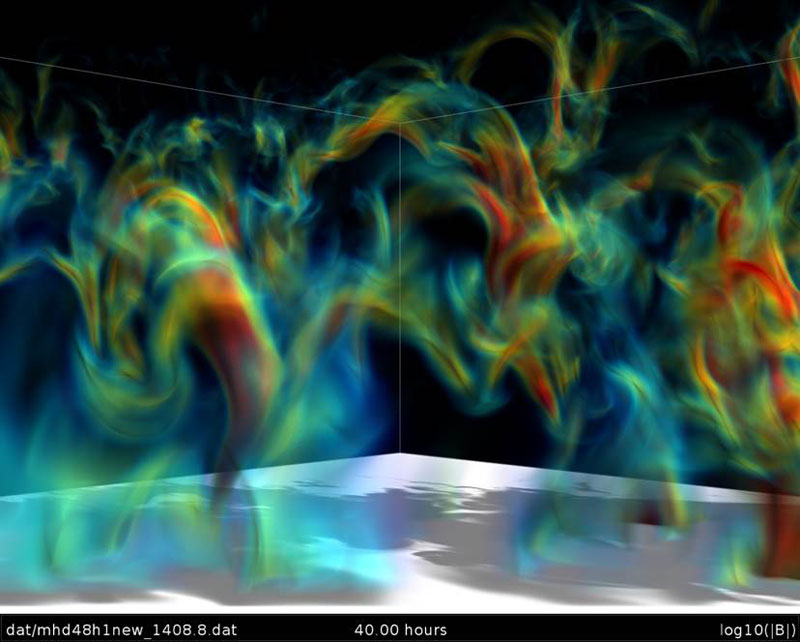
Supercomputer simulation of magnetic loops on the Sun, NASA
The Sun has been watched and worshipped by diverse cultures around the world for thousands, if not tens of thousands of years [1]. It is a symbol of power and strength, of light and illumination, revered and feared in equal measure for its overriding importance for sustaining life. As befits its deity status, the Sun can only be watched from afar, the latest by twin STEREO spacecrafts launched 26 October 2006 into Earth’s orbit, one ahead, and one behind the planet [2], so that both the Sun’s front and back side can be imaged at the same time. An almost complete 360˚ stereoscopic image was finally achieved in February 2011. But since October 2014, contact has been lost with STEREO B the one behind Earth’s orbit.
We know that the Sun is a ball of hot magnetized plasma; by number of atoms, 91.2 % hydrogen, 8.7 % helium, 0.089 % oxygen, 0.043 % carbon, 0.0088 % nitrogen and smaller amounts of silicon, magnesium, neon, iron and sulphur. Altogether, 67 elements have been detected in the solar spectrum [3]. It has a diameter ~ 1 392 684 km, about 109 times that of Earth, and its mass 1.989×1030 kg ~330 000 times that of Earth, accounts for 99.86 % of total mass of the solar system [4]. The Sun forms magnetic loops and arcades over its surface (see supercomputer simulation at the beginning of this article). It is prone to sudden eruptions in flares and mass ejections from its atmosphere (corona) which extends millions of kilometres into space from its bright surface (photosphere) (Figure 1).
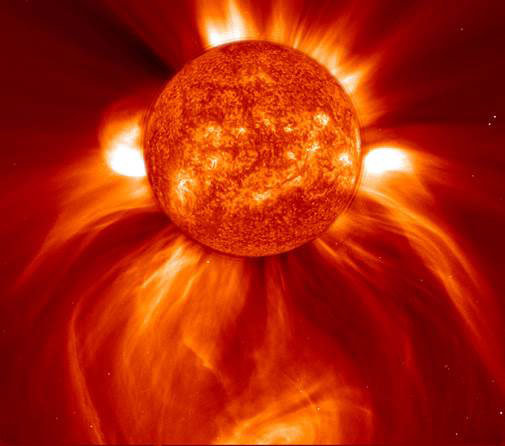
Figure 1 Composite image of solar flares and a coronal mass ejection (bottom), University of Colorado
Prodigious amounts of power are released in solar flares along with huge numbers of high energy electrons and a whole spectrum of electromagnetic radiation, from radio waves to visible, uv, X-rays and γ-rays. Mass ejections send billions of tons of gas, mainly electrons and protons, along with enormous amounts of electromagnetic energy into space causing major disruption to the electricity grid when directed at Earth. Solar flares and coronal mass ejections are part of a spectrum of solar activity, the easiest to quantify are sunspots, dark patches that appear on the Sun’s surface.
Solar activity follows a cyclical pattern coinciding with a regeneration/reorganization of the Sun’s large-scale magnetic field (Figures 2 and 3), which appears to exist in two major components, a toroidal component (directed radially) and a poloidal component (directed towards the poles), both of which undergo cyclical changes with a period of 22 years [5]. It is widely believed that the cyclic regeneration of the Sun’s magnetic field is at the root of solar activity, and that the magnetic cycle is due to the inductive action somewhere inside the Sun. A great deal of effort has been devoted into modelling the solar cycle in terms of a solar dynamo, but “key questions relating to the explanatory framework” remain unanswered. (We shall look at this problem again at the end of this article.)
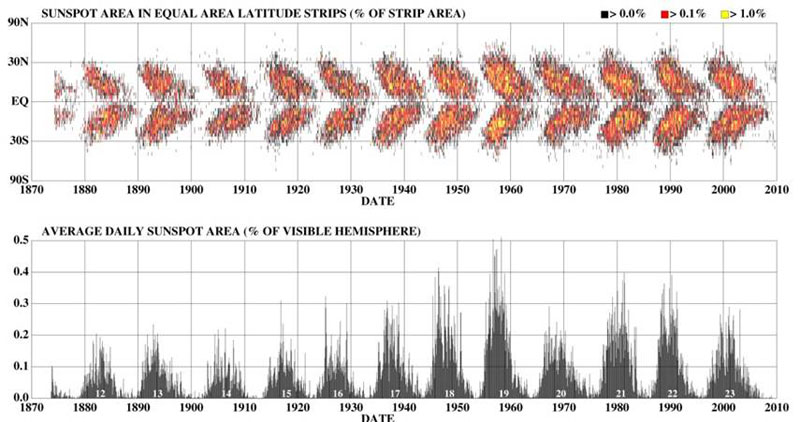
Figure 2 The sunspot ‘butterfly diagram’ showing the fractional coverage of sunspots as a function of solar latitude and time (courtesy of D. Hathaway, NASA/MSFC) [6, 7]
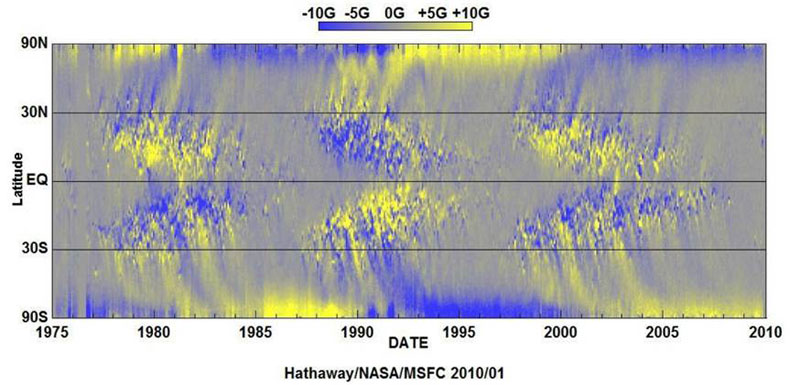
Figure 3 Magnetographic map of the Sun’s surface magnetic field showing poloidal component undergoing cyclic variation changing polarities at the times of sunspot maximum [6, 8]
If the Sun has remained a major mystery, what of the huge magnetic bubble, the heliosphere, that surrounds the entire solar system and much more beyond?
Beginning in the early 1960s, numerous spacecrafts and missions have been launched to study the Sun and the solar system [9, 10]. But the most amazing observations have come lately from NASA’s Voyagers launched 38 years ago and the IBEX (Interstellar Boundary Explorer) launched in 2008. They are overturning long-held assumptions of what the heliosphere is like and raising important new questions.
The heliosphere (Figure 4) extends well beyond the orbit of the outermost planet Pluto, dominated by the solar wind blown out from the Sun’s corona (atmosphere) carrying particles at supersonic speeds. As the solar wind begins to interact with the interstellar medium, its velocity slows before finally stopping altogether. The point where it becomes slower than the speed of sound (subsonic) is the termination shock. Beyond that, the solar wind continues to slow as it passes through the heliosheath, which is in turn bounded by the heliopause, where the interstellar medium and the solar wind pressures balance [11]. Ahead of that is the bow shock, a kind of shock wave created as the heliosphere moves through the interstellar medium, rather like a mechanical wave that appears in front of a boat speeding through water.
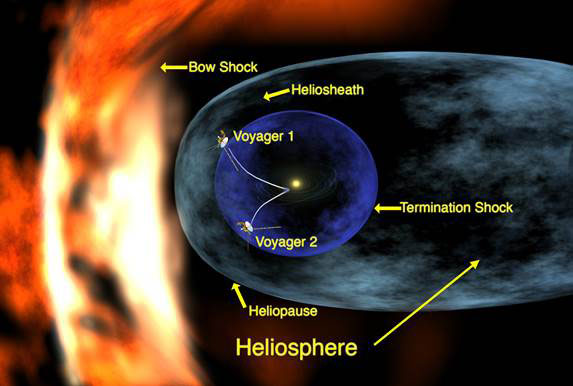
Figure 4 Artist’s impression of the heliosphere and the positions Voyager 1 and Voyager 2 as they traversed the termination shock
The termination shock was traversed by the twin spacecrafts, Voyager 1 in 2004 and Voyager 2 in 2007, and both have continued sending back data as they proceed in different directions through the heliosheath across the heliopause and towards interstellar space (see Fig. 4). Their measurements are raising questions over the precise boundary between the heliopause and interstellar space, the direction and magnitude of interstellar magnetic field and whether the bow shock exists.
NASA’s IBEX (Interstellar Boundary Explorer) mission was launched 19 October 2008 to map the entire heliosphere, to discover the nature of the interactions between the solar wind and the interstellar medium [12]. These interactions create energetic neutral atoms (ENAs) that move very quickly in straight lines from where they were created, being unaffected by electric or magnetic fields. IBEX measures the particles that happen to be travelling inward from the boundary of the heliosphere with two detectors designed to collect and measure ENAs. From this data, maps of the heliosphere boundary would be created.
IBEX first all-sky map of the heliosphere have taken researchers “by surprise” [13]. It showed “a bright winding ribbon of unknown origin… a shocking new result,” said IBEX principal investigator Dave McComas of the Southwest Research Institute. “We had no idea this ribbon existed or what has created it. Our previous ideas about the outer heliosphere are going to have to be revised.” This ribbon was made up of particularly high density of the ENAs that IBEX was looking for.
Unlike the Voyager spacecrafts that have been travelling to the edge of the solar system for in situ sampling, IBEX stays close to home. It is in orbit around Earth, collecting ENAs in all directions, giving it a unique panoramic view necessary to discover something as vast as the ribbon (Figure 5).
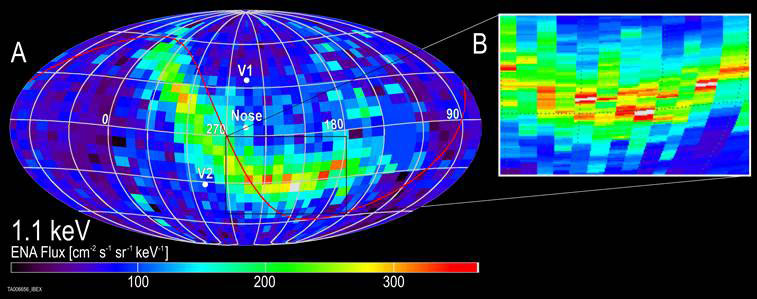
Figure 5 IBEX ribbon of enhanced ENA flux across the sky
The ribbon, almost a complete circle, runs perpendicular to the direction of the galactic magnetic field just outside the heliosphere [13] (Figure 6). More detailed analysis shows that the ribbon is likely centred on the direction of the local interstellar medium (LISM) magnetic field [14].
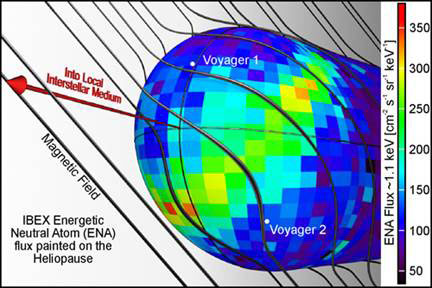
Figure 6 IBEX ribbon perpendicular to galactic magnetic field
IBEX measurements, which establish a local interstellar magnetic field direction [14], also solve another long standing puzzle: the anisotropy of high energy (teraelectron volts TeV = 1012 eV) cosmic rays as mapped from ground-based high-energy cosmic-ray observatories (Milagro, Asγ, and IceCube).
IBEX provided updated values for the velocity vector of the heliosphere through the local interstellar cloud (LIC), and the direction of the LISM magnetic field from the centre of the IBEX ribbon of ENA emissions. These results show that the interstellar flow through the local standard of rest (LSR) is nearly perpendicular (87.6˚ + 3.0˚) to the LISM magnetic field direction. (The LSR is the velocity frame in which the mean motion of the oldest stars in the Milky Way in the neighbourhood of the Sun is zero, and is the reference frame in which cosmic rays assume near uniformity in velocity directions.) The LISM magnetic field direction from the ribbon centre is within ~33˚ + 20˚ of the magnetic field direction derived by interstellar polarization data from stars within 40 pc (parsec, a unit of distance in astronomy; one parsec corresponds to the distance at which the mean radius of the earth's orbit subtends an angle of one second of arc, and is equal to about 3.26 light years or 3.086 x 1013 km). In their paper [14], the researchers showed that the anisotropy maps of high-energy TeV cosmic rays likely provide independent confirmation of the interstellar magnetic field orientation inferred from the ribbon centre.
The flux of TeV galactic cosmic rays varies as a function of look direction in the sky. The large-scale structure in the TeV GCR sky consists of two broad asymmetries with flux variations of ~0.2 %: a deficit of GCR flux at high galactic latitudes and an excess of flux in the heliotail direction. Small-scale TeV anisotropies (<~10 %) in cosmic-ray arrival direction possibly arise from cosmic-ray propagation in a turbulent magnetic field. Because TeV GCRs have radii of gyration ~700 AU (astronomical unit, the mean distance from the centre of Earth to the centre of the Sun, 1 AU = 149.6 million kilometres) in the LISM, the observed GCR asymmetries must originate in the immediate interstellar environment of the Sun.
Cosmic rays are largely guided by the interstellar magnetic field. In their model, a small ratio of perpendicular to parallel diffusion of 0.3 % is assumed, given an interstellar flow nearly perpendicular to the magnetic field direction on the basis of IBEX observations. The LISM magnetic field is further modelled to be deflected around the heliosphere. A sky map is then constructed of cosmic ray flux as viewed from the Sun. The result of the simulation is broadly comparable with the observations (Figure 7).
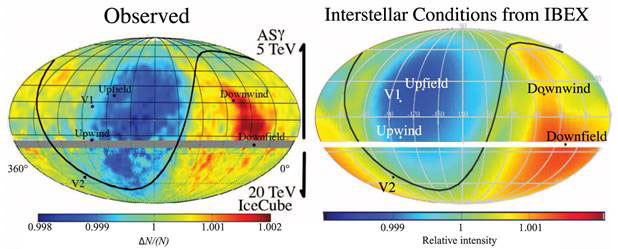
Figure 7 Observed and predicted anisotropy of TeV cosmic ray flux
IBEX has also mapped the boundaries of the heliotail for ENAs [15]. There are two lobes of slower particles on the sides and fast particles above and below, with the entire structure twisted (Figure 8). This pattern is consistent with the fact that the Sun has been sending out mostly fast solar wind near its poles and slower wind near its equator for the past few years.
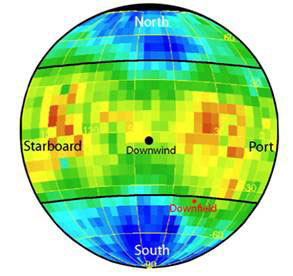
Figure 8 IBEX ENA map of the heliotail [8]
Another big surprise is that the heliotail is much shorter than previously thought. For decades, the heliosphere was believed to be shaped like a comet with a very long tail extending some 747 billion km, and a nose protected by a bow shock as it comes up against the interstellar magnetic field. The latest study, however, suggests that the heliosphere is dominated by two giant jets emanating from the Sun’s north and south poles and curving round in two relatively short tails toward the back, confined by interaction with the interstellar magnetic field [16]. The two jets are similar to other astrophysical jets seen in space, which are usually bipolar streams of matter ejected along the axis of rotation of bright compact bodies at the centre of certain galaxies, quasars and stars. This observation is also consistent with the IBEX ENA map of the heliotail (Fig. 8).
Lead author Merav Opher, astronomer at Boston University, and her colleagues found the jets and determined the new shape when they adjusted simulations of the heliosphere based on observations collected by Voyager 1, which they thought had recently moved outside the heliosphere into interstellar space (though this is disputed by others). If there were no interstellar flow, the magnetic fields around the sun would confine the jets and they would be pointing straight north and south.
Researchers have already found that the nose of the heliosphere is much shorter than expected. The entire heliosphere is only about 250 times the distance between Earth and the Sun, i.e., ~37 billion km, 20 times shorter than before.
Both Cassini (a previous mission) and IBEX have gathered information about the tail end of the heliosphere by looking at ENAs. Cassini data show a similar amount of ENAS from the tail and the nose, suggesting that the size of both sides was similar. The heliosphere is most likely spherical, and not at all elongated at the tail like a comet.
Moreover, there appears to be no bow shock [17]. IBEX shows that the Sun is still located within the local interstellar cloud. The Sun’s relative motion with respect to the interstellar medium is 23.2 + 0.3 km s-1 as opposed to the old value of 26.3 km s-1 estimated from a previous mission Ulysses. This produces ~22 % less dynamic pressure, enhancing the importance of the external magnetic pressure compared with dynamic pressure. A simple analytical model shows that for an external magnetic field strength >0.22 nT, the bow shock completely disappears. Using simulations from independent, state-of-the-art models from the Huntsville and Moscow groups, the results give a weak bow shock for 0.2 nT, which spans only a few simulation grid cells, no bow shock at 0.3 nT, although a build-up in density extends in from ~500 AU; and no jump at all at 0.4 nT, with a build-up in density starting at the edge of the simulation (1 000 AU).
Given the IBEX velocity of the LISM and including nonlinear heating of the very local ISM near the heliosphere, the researchers further showed that no reasonable combination of external field, density, and temperature will produce a bow shock.
Among the most remarkable finding from Voyager 1 is the unchanging magnetic field direction as it crossed into a boundary region of the heliosheath. Magnetic field measurements showed that the spacecraft crossed the boundary of an unexpected region five times between day 210 and ~238 in 2012 [18]. The magnetic field strength B increased across this boundary from ~0.2 to >0.4 nT and remained so until at least day 270 2012. The strong magnetic fields were associated with unusually low counting rates of >0.5 MeV particles (Figure 9). The direction of B did not change significantly across any of the five boundary crossings. It was very uniform and very close to the spiral magnetic field direction observed throughout the heliosheath. The observations indicate that Voyager 1 entered a region of the heliosheath that is now referred to as the heliosheath depletion region (HDR), rather than the interstellar medium, because an interstellar magnetic field strength of this magnitude or greater has been ruled out by IBEX measurements.
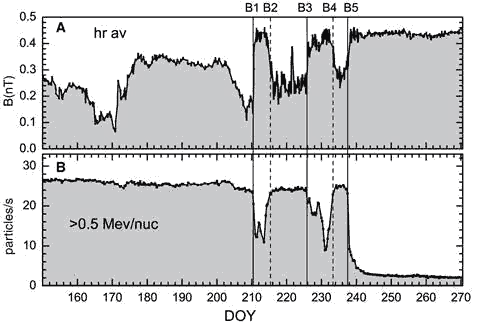
Figure 9 Measurements from Voyager 1 of magnetic field (top) and particles >0.5 MeV/nucleus (bottom)
Voyager 1 measurements also reveal that particles of solar origin at Voyager 1 located 18.5 billion kilometres (123 AU) from the Sun decreased by a factor of >103 on 25 August 2012, while those of galactic origin (cosmic rays) increased by 9.3 % simultaneously [19]. Intensity changes appeared first for particle moving in the azimuthal direction and were followed by those moving in the radial and anti-radial directions with respect to the solar radius vector.
There was anisotropy in the measurements of ACRs (anomalous cosmic rays) and GCRs (galactic cosmic rays). ACRs with kinetic energy ~10-100 MeV/nucleus originate within the heliosphere, and are distinct from GCRs of interstellar origin. The depletions of ~4 MeV protons in the ACRs depended on the direction of motion of the particles with respect to the local magnetic field. Particles gyrating perpendicular to the magnetic field were depleted least, whereas those moving parallel to the field were depleted most. The GCRs on the other hand, were roughly isotropic in mid-2012 but became gradually anisotropic during the brief spike in intensity and remained so after the final increase. There was a depletion of particles perpendicular to the magnetic field, because they cannot readily enter from the outside.
The observations present a compelling case that Voyager 1 has crossed into a region of space that could be labelled heliospheric depletion region (HDR), where hot heliosheath particles are undetectable at energies >40 keV.
No existing model predicted either the extreme sharpness of the edge for all particle species or the invariant magnetic field direction across the edge during the crossing on day 238 of 2012.
The researchers suggest an ‘interchange instability” that allows the cold high “magnetic field flux tube” (field-aligned Birkeland current?) to enter the heliosheath from the local interstellar medium facilitated by the tangential direction of the magnetic field being the same on both sides of the boundary. A LISM (local insterstellar medium) flux tube with strong magnetic field and containing only GCRs and cold interstellar plasma that becomes embedded into the edge of the hot heliosheath by the instability will tend to move deeper within the heliosheath. It will then begin to be populated with hot ions, first at 90 pitch angles and then at all other angles. At the same time the GCRs will slowly leak out of the flux tube into the heliosheath, thus decreasing their intensity. All the while the magnetic field will keep most of its outside value in order to maintain pressure balance. This electrical connection with the interstellar medium may be crucial for the heliosphere.
Is the Voyager 1 actually in the interstellar medium? One key piece of evidence is that the direction of the magnetic field has not changed, even though its intensity has more than doubled, coinciding with sharp discontinuities in the relative abundance of galactic versus heliospheric cosmic rays and energetic (>0.5 MeV) heliospheric particles. Some researchers are of the opinion that Voyager 1 has yet to cross the heliopause [20]. Others, such as proponent of the Electric Universe Wal Thornhill, are taking this to indicate a direct connection of our Sun to the general galactic circuit of the Milky Way [21].
However, it is important to stress that the Sun is a dynamo that generates its own electrical power in a circuit that is locally closed, and modelled as such [5]. But the possibility remains that it is also distantly connected, as implicit in the heliospheric circuit [22] proposed by Hannes Alfvén, the father of plasma astrophysics. I have redrawn his diagram in a symmetrical form (Figure 10).
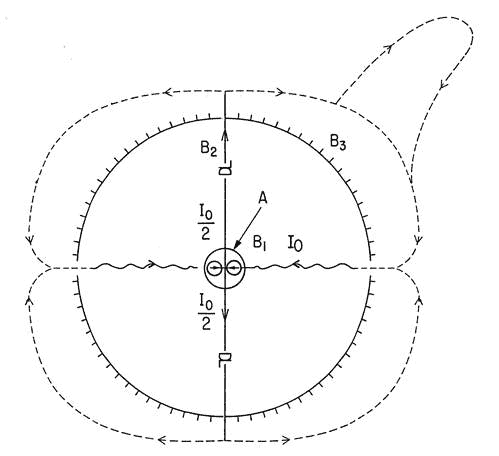
Figure 10 Alfvén’s heliospheric circuit
Alfvén proposed that the rotating magnetized Sun acts as a unipolar inductor A producing a current that during odd solar cycles goes outwards along the axis B2 (as field-aligned Birkeland currents with double layers DL) in both directions and inward in the equatorial plane B1. The current closes at large distances B3, but “we do not know where.” The equatorial current layer is often very inhomogeneous. “Further, it moves up and down like the skirt of a ballerina.” In even solar cycles, the direction of the current is reversed. By analogy with Earth’s magnetospheric circuit, we may expect the heliopheric circuit to have double layers and should be located at the axis of symmetry, but only in those solar cycles where the axial current is directed away from the Sun.
Alfvén first published his conceptual model in 1981, but little or no work has been done to follow up the idea until 2001 when a team of researchers from Tel Aviv University in Israel and University of Michigan Ann Arbor in the United States carried out a magneto hydrodynamic (MHD) simulation of the three-dimensional structure of the heliosphere [23].
The existence of the radial component of the electric current flowing toward the Sun is revealed in the numerical simulation. The total strength of the radial current is ~3 x 109 A. The only way to fulfil the electric current continuity is to close the radial electric current by means of field-aligned currents at the polar region of the Sun. Thus the surface density of the closure current flowing along the solar surface can be estimated as ~4A/m, and the magnetic field produced by this current is B~5 µT (0.05G), i.e., several % of the intrinsic magnetic field of the Sun (~1 G).
Solar wind outflow from the Sun causes magnetic field lines originating from opposite hemispheres to extend radially outward and brings them together near the equatorial plane. These field lines are of opposite magnetic polarities and thus the interplanetary field must change sign abruptly within the narrow layer near the equatorial plane. This implies the presence of a thin sheet of a very high current density. The current circulates around the dipole axis in the same direction as the original current generating the dipole field. It is this heliospheric current sheet that separates fields and plasma flows from different hemisphere.
Rotation of the Sun twists the interplanetary magnetic field lines in such a way that they take the shape of Archimedean spiral. Another effect of the rotation is warping the current sheet plane into a structure that resembles a ballerina’s skirt. Yet a further consequence of solar rotation and magnetic field line twisting was predicted by Alfven. The spiral form of the magnetic field lines means that there is a significant radial as well as azimuthal component of the electric current in the sheet.
In Figure 11 (left), solid lines are the magnetic field lines slightly above the magnetic equator whereas dashed lines correspond to those slightly below the equatorial plane; the electric currents (empty lines) are also spirals. The only way to satisfy the electric current continuity is to close the radial electric current by field-aligned currents at the polar region of the Sun. This current closure leads to the three dimensional heliospheric current system schematically depicted by Alfvén (Figure 11 right). Thus, the heliospheric current system produced by the Sun acts like a unipolar generator or dynamo.
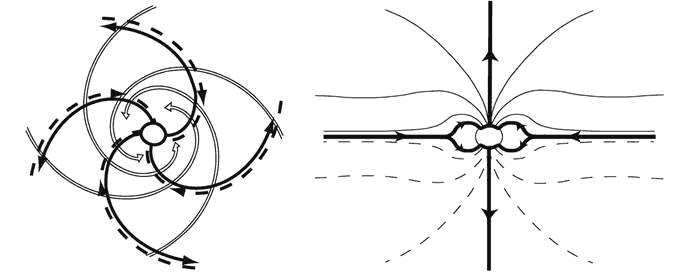
Figure 11 Interplanetary magnetic field lines and electric current in the solar wind near the heliospheric current sheet (left), and heliospheric current circuit in the meridional plane (right)
The three-dimensional structure of the heliospheric current system obtained from a self-consistent, first-principles based numerical model of the solar wind outflow with realistic intrinsic solar magnetic field is consistent with Alfven’s conceptual model.
Continuity of the electric current requires the radial component closure through the solar atmosphere as sketched in Fig. 11 right. The researchers were able to follow this closure. A polar view of isolines of the radial current on the Sun’s surface shows that near the magnetic pole the current flows from the Sun. But the region of upward current is surrounded by downward current. This picture is reminiscent of the regions of field aligned currents in the Earth’s polar ionosphere (see [24] Earth's Magnetized Plasma Shield & Earth-Sun Connection, SiS 68), where there is current circuit closure on Earth, yet a direction connection to the Sun is maintained). Results of calculations show that there is a continuous transition from positive to negative value of the radial electric current near the magnetic pole. All the regions within the ring of downward negative field-aligned current are filled by the positive upward current.
The model did not address closure of the circuit outside the heliosphere; nor does any other dynamo model of solar activity [5], and perhaps that is part of the difficulty involved in providing satisfactory explanations.
One could envisage (as Alfvén did) the entire Plasma Electric Universe being interconnected via field-aligned currents of appropriate dimensions, scaled upwards from Earth-size to interstellar, galactic, and beyond in something like a universal electricity grid. In analogy with a power grid on Earth, interconnectivity enables long-distance transmission, but it also allows disturbances to propagate, causing large-scale blackouts and electrical explosions, and indeed grid system structure and vulnerability is an active area of current research [25]. These studies indicate that local electricity generation (and storage) as well as a certain degree of clustering and isolation from the main power generators are necessary for stability and safety. For the Sun, the most conspicuously known major power generator is the centre of the Milky Way galaxy, reputedly a supermassive black hole with a supermagnetic field over it [26]. It would not be surprising, therefore, if the Sun’s immediate remote circuit closure is somewhere within the local interstellar cloud, several ‘nodes’ removed from the galactic centre.
Article first published 07/10/15
Comments are now closed for this article